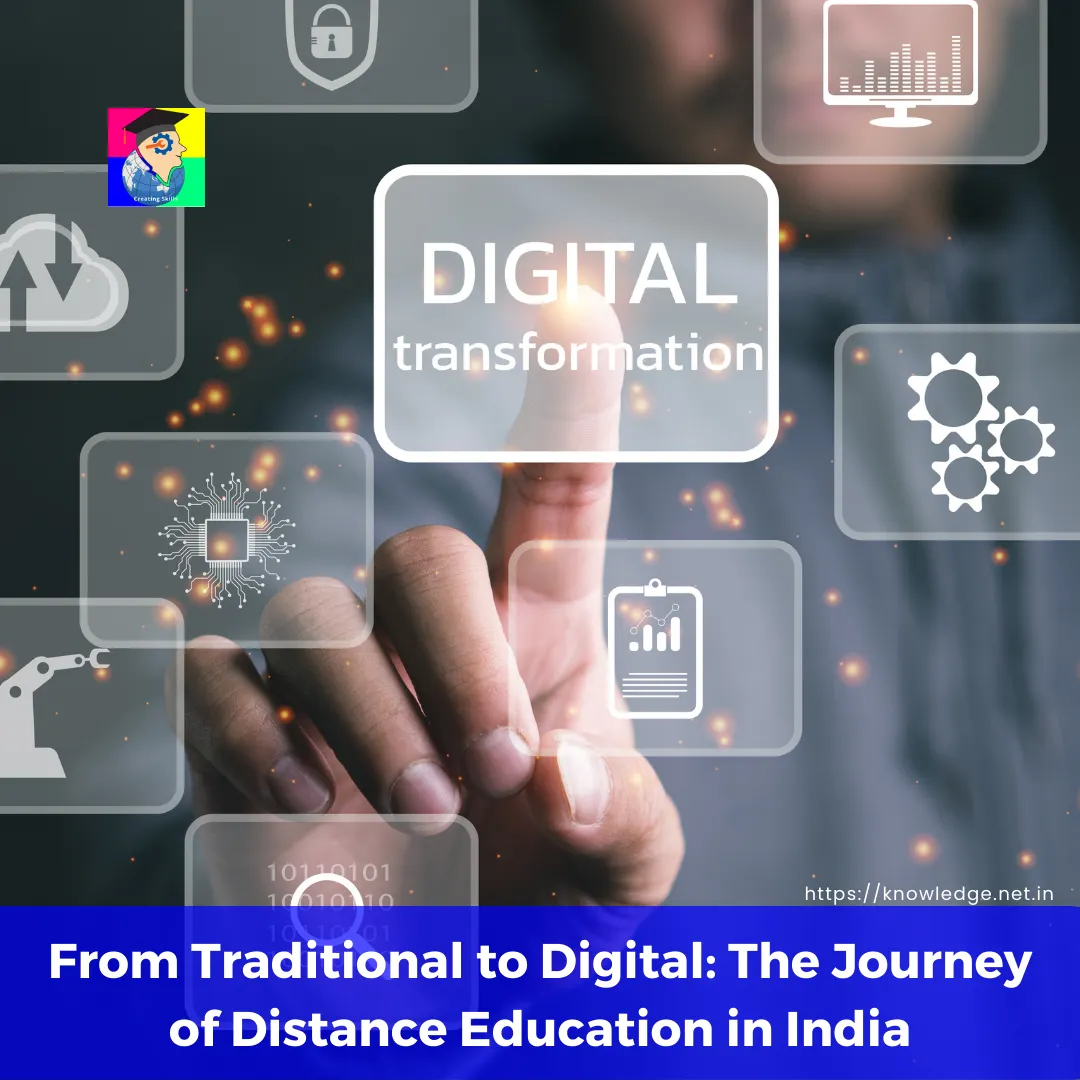From Traditional to Digital: The Journey of Distance Education in India

Distance education has emerged as a transformative force in the field of education globally. With advancements in technology, the concept of traditional classrooms and brick-and-mortar institutions has undergone a significant shift. India, with its diverse population and vast geographical expanse, has witnessed a remarkable journey in the realm of distance education. In this blog, we will delve into the evolution of distance education in India, exploring its challenges, successes, and impact on the education landscape.
Historical Perspective:
The roots of distance education in India can be traced back to the establishment of the University of Madras in 1857, which introduced correspondence courses as a means of education for remote learners. This marked the beginning of a new era, where students could pursue education from the comfort of their own homes, transcending the limitations of time and place. The introduction of radio and television broadcasts further enhanced the reach of distance education programs, allowing learners to access educational content and lectures remotely.
The Advent of Digital Age:
The real transformation of distance education in India occurred with the arrival of the digital age. The widespread availability of the internet, coupled with advancements in information and communication technologies, opened up new possibilities for remote learning. The launch of the National Mission on Education through Information and Communication Technology (NME-ICT) in 2009 by the Government of India was a significant step towards harnessing the power of digital technologies in education. This initiative aimed to provide connectivity to educational institutions and develop e-content for various courses.
E-Learning Platforms and Massive Open Online Courses (MOOCs):
One of the game-changers in distance education has been the rise of e-learning platforms and Massive Open Online Courses (MOOCs). Platforms like Coursera, edX, and Udacity have partnered with prestigious Indian universities and institutions to offer a wide range of courses online. These courses are often free or available at a minimal cost, making quality education accessible to a vast number of learners. MOOCs have gained popularity not only among students but also among working
professionals seeking to upskill or acquire new knowledge.
Government Initiatives and Digital Infrastructure:
Recognizing the potential of digital education, the Indian government has launched several initiatives to promote distance education. The Digital India campaign, launched in 2015, aims to provide digital infrastructure and services, including high-speed internet connectivity, to all citizens. Initiatives such as SWAYAM (Study Webs of Active Learning for Young Aspiring Minds) and SWAYAM Prabha have been introduced to offer online courses and educational content across various disciplines. These initiatives have played a crucial role in democratizing education and bridging the urban-rural divide.
Challenges and Solutions:
While distance education in India has made significant progress, it faces certain challenges that need to be addressed. Access to high-quality internet connectivity remains a concern, particularly in remote areas. Affordability of devices and internet services is another barrier for many learners. Additionally, the lack of digital literacy
and the need for personalized support in an online environment pose challenges
for students. To overcome these hurdles, efforts must be made to improve digital infrastructure, provide subsidies for devices and internet access, and offer training programs to enhance digital literacy among learners.
The Impact on Education Landscape:
The transformation from traditional to digital distance education has had a profound impact on the education landscape in India. It has expanded access to education, enabling learners from diverse backgrounds to pursue their educational aspirations. The flexibility offered by online courses has empowered working professionals to upskill and enhance their career prospects. The availability of a vast repository of digital content has enriched the learning experience and fostered
self-paced learning. Distance education has also facilitated the exchange of knowledge and ideas among learners from different regions, promoting a culture
of collaboration and diversity.
The journey of distance education in India from traditional correspondence courses to digital learning platforms has been a remarkable one. With advancements in technology and concerted efforts by the government and educational institutions, distance education has transformed the way knowledge is imparted and acquired. While challenges remain, the increasing adoption of digital infrastructure and the
availability of online resources have opened up new avenues for learners across
the country. The future of distance education in India holds immense potential,
with the promise of inclusive, accessible, and high-quality education for all.
Join the conversation👇 and let your voice shape the future of distance education in India!
